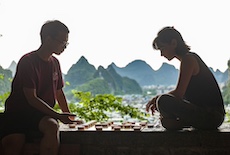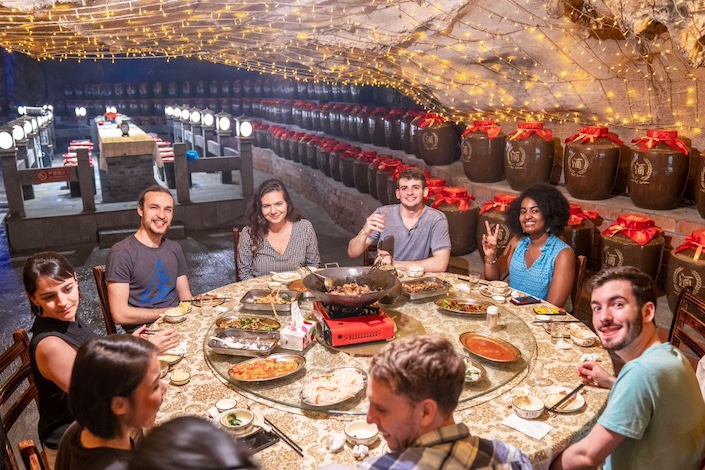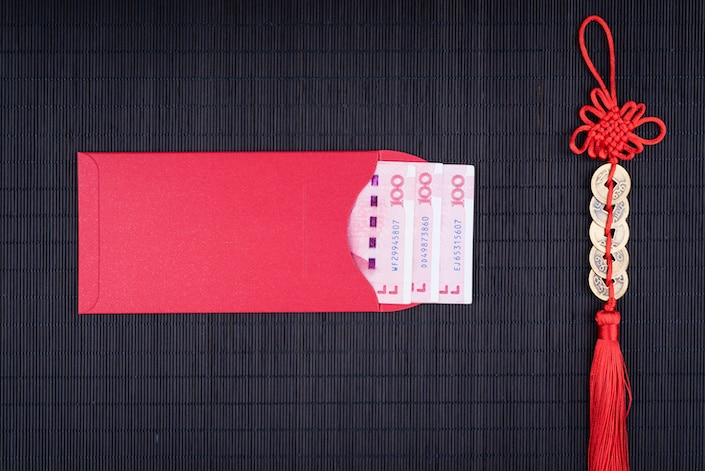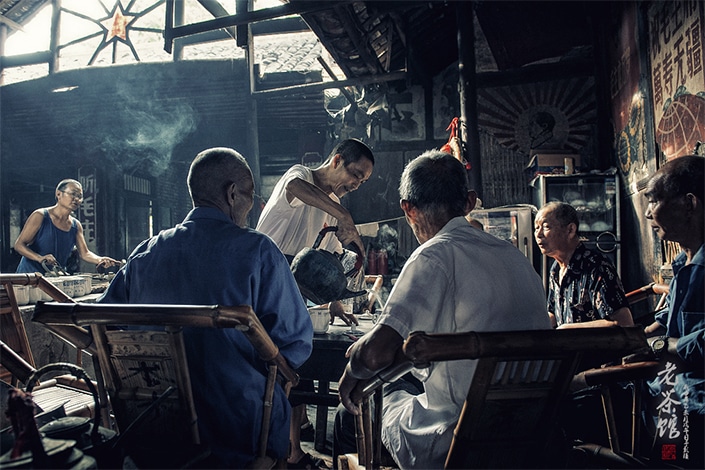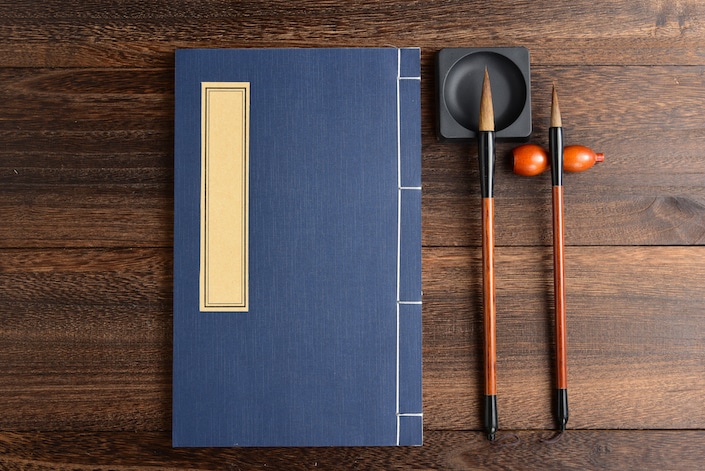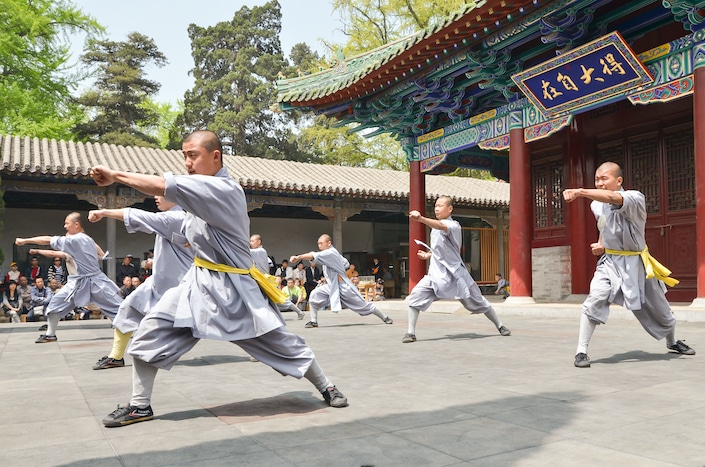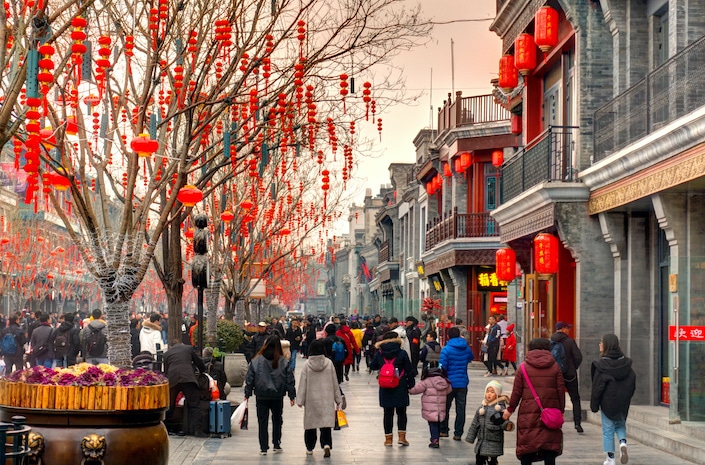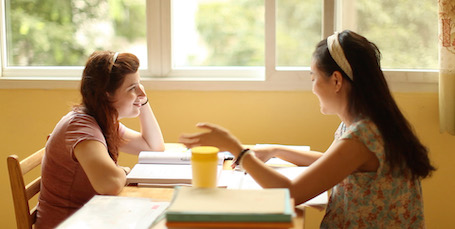A Brief Introduction to Traditional Chinese Medicine (TCM)
Learn Chinese in China or on Zoom and gain fluency in Chinese!
Join CLI and learn Chinese with your personal team of Mandarin teachers online or in person at the CLI Center in Guilin, China.
Traditional Chinese Medicine (中医 or zhōngyī in pinyin), also called “TCM,” is an ancient system of traditional medicine developed in China over thousands of years. Although seeking TCM treatment is still somewhat uncommon in the West, it’s hard to spend much time in China without realizing that TCM still enjoys a booming popularity there.
Walk down any street and you’re likely to bump into several pharmacies selling traditional Chinese herbal medicines. You’re also likely to hear Chinese people make frequent reference to TCM-related concepts, like the idea that certain foods are “hot” while others are “cold.” Chinese doctors and dentists practicing Western medicine in mainstream hospitals and clinics may even make TCM-inspired recommendations, focusing on the implementation of certain daily living habits in order to encourage well-being.
Table of Contents
- What is Traditional Chinese Medicine?
- Common TCM Treatments
- History of Traditional Chinese Medicine
- What’s the status of Traditional Chinese Medicine in China today?
- How has Traditional Chinese Medicine been received internationally?
- Controversies
- The Future of Traditional Chinese Medicine
- Chinese vocabulary related to Traditional Chinese Medicine
Given the continued prevalence of TCM in everyday Chinese life, gaining some familiarity with it is a good idea for students of Chinese language and culture. Read on to learn more about the past, present, and future of traditional Chinese medicine!
What is Traditional Chinese Medicine?
Traditional Chinese medicine is a catch-all term for a variety of medical treatments and practices that have developed in China over hundreds and sometimes thousands of years. TCM practitioners take a holistic approach to health. Instead of treating specific symptoms of a disease in isolation, they look at the body as a whole and work to identify the underlying causes of the disease.
One of the most important concepts in TCM is qi (气 or qì). Qi is a vital energy that circulates throughout the body, flowing through pathways called meridians (经络 or jīngluò). In healthy people, qi circulates unimpeded, but health problems can result if the flow of qi is blocked or if it is too strong or too weak. Many TCM treatments focus on restoring the normal flow of qi.

TCM practitioners believe that qi flows through the human body along a set of pathways called meridians.
TCM practitioners believe that all the different organs and systems within the body form an interconnected, organic whole. Each part of this whole can be described as either yin (阴 or yīn) or yang (阳 or yáng). If the flow of qi is blocked or the blood is stagnant, imbalances in a person’s yin and yang can result. According to Traditional Chinese Medicine, these imbalances can lead to health problems, so many TCM therapies focus on restoring this balance.
When making a diagnosis, TCM doctors use various methods including inquiry, inspection, palpation, olfaction (smelling) and auscultation (listening). It’s also common for TCM doctors to take patients’ pulse and examine their tongues before deciding on a course of treatment.

The four classic diagnostic methods used in TCM are 望 (wàng), to inspect, 闻 (wén), to smell and listen, 问 (wèn), to inquire and 切 (qiè), to palpate the pulse.
Common TCM Treatments
Herbal medicines
Chinese herbal medicines (中药 or zhōngyào) are widely prescribed by TCM doctors. In most cases, patients are prescribed a mixture of various herbs which are boiled in water to make a tea-like brew. Thousands of different plant and animal species are used in TCM.

Thousands of different plant and animal ingredients are used to make medicines in TCM.

TCM practitioners make medicines by boiling various natural ingredients in water.
Acupuncture
Acupuncture (针灸 or zhēnjiǔ) involves inserting thin needles into a patient’s body at specific points along the meridians in an effort to rebalance the flow of qi.
One of the more popular TCM treatments outside of China, acupuncture is used to treat a variety of ailments from chronic pain to infertility. As with other Traditional Chinese Medicine practices, the debate continues concerning the effectiveness of acupuncture.

Acupuncturists believe inserting needles at certain points along the body's meridians helps redirect the flow of qi.
Moxibustion
Often used together with acupuncture, moxibustion (艾灸 or àijiǔ) involves burning an herbal mixture either on an acupuncture needle or directly on strategic points on the patient’s body. The heat that results from the burning herbs is thought to facilitate the flow of qi along the meridians.

Like acupuncture, moxibustion is focused on redirecting the flow of qi within the body.
Massage (tuina)
Tuina (推拿 or tuīná) is a special type of TCM treatment that combines massage and acupressure techniques. Practitioners apply strong, deep pressure to specific points along the meridians to help improve the flow of qi.

Those looking for a relaxing experience may be surprised by the deep pressure applied by tuina practitioners.
Cupping
Cupping therapy (拔罐 or báguàn, also commonly referred to as 拔火罐 or báhuǒguàn) involves placing inverted rounded cups onto the skin to enhance the flow of qi. Before placing the cups, practitioners usually burn a flammable substance inside them to create a vacuum effect, allowing the cups to stick tightly to the skin.
When removed, the cups leave circular dark purple bruises that can take up to three weeks to disappear. Cupping is used to treat headaches, nasal congestion, and various other types of ailments and pain.

While cupping looks painful, many people believe the practice can actually enhance relaxation and well-being.
Guasha
Guasha (刮痧 or guāshā) involves using a tool to apply pressure to and rub the skin in an attempt to increase the flow of qi and stagnated blood within the body. Guasha is often used to treat joint and muscle pain.
Like cupping, this treatment leaves bruises on the skin which take some time to heal. For a fascinating exploration of East-West cultural misunderstandings with regards to guasha, check out the movie The Guasha Treatment.

Guasha is another painful-looking TCM practice that's thought to have many health benefits.
Qigong and tai chi
Slow, meditative martial arts-inspired exercises like qigong (气功 or qìgōng) and tai chi (太极 tàijí, also called 太极拳 or tàijíquán) require practitioners to engage in a series of movements paired with controlled breathing exercises. These practices are thought to promote health and help balance patients’ qi.

Tai Chi is thought to help balance one's qi.
Diet and nutrition
TCM practitioners believe certain foods are either “hot” (阳 yáng) or “cold” (阴 yīn) foods. Certain diseases are thought to result from an overabundance of either yang or yin in the body.
Adjustments to one’s diet can correct this overabundance. For example, patients whose ailments are due to too much yang might be encouraged to eat “cold” foods like mung beans, and patients with too much yin might be asked to eat “hot” foods like mutton. TCM traditions also encourage people to make seasonal adjustments to their diets by changing the foods they eat depending on whether it's winter or summer.
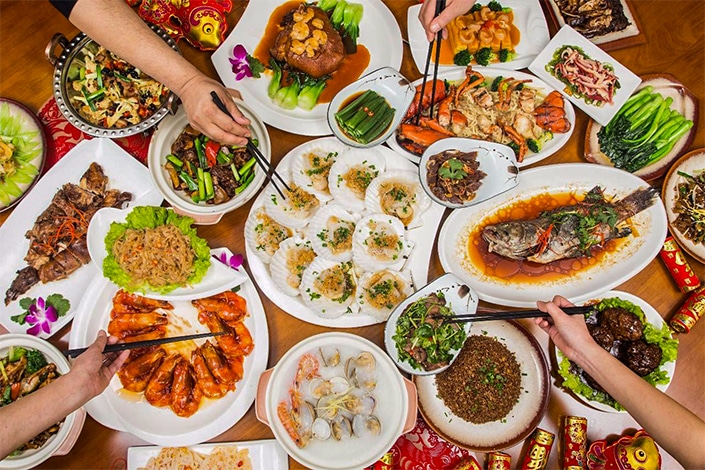
In TCM, certain foods are said to be "hot" while others are said to be "cold," regardless of their actual temperature.
History of Traditional Chinese Medicine
Like most aspects of traditional Chinese culture, Chinese medicine has a long history. Originally said to have been invented by the legendary Yellow Emperor and the Emperor Shennong, there is oracle bone evidence of traditional Chinese medical practices dating back to the Shang Dynasty (c. 1600-1046 BC). Shang Dynasty people’s understanding of disease was limited, however. Illnesses were thought to be caused by curses from one’s ancestors and treatments involved some magical aspects.
China’s first systematic medical texts appeared during the Han Dynasty (202 BC–220 AD). The four great classics of Chinese medicine (中医四大经典 or zhōngyī sìdàjīngdiǎn) were written during this time. The first is The Inner Canon of the Yellow Emperor (黄帝内经 or Huángdì Nèijīng). This text describes treatments still used in TCM today such as acupuncture, drugs and dietary changes. It also lays out the theories about anatomy and physiology that form the philosophical basis for TCM.

Written almost 2,000 years ago, The Inner Canon of the Yellow Emperor describes treatments still used today.
Another important Han Dynasty text is The Classic of Herbal Medicine (神农本草经 or Shénnóng Běncǎojīng). Believed to have been compiled based on earlier oral traditions, this classic reference book lists 365 medicinal plants.

The Classic of Herbal Medicine is an important text in the TCM tradition.
Another classic TCM text, The Emperor’s Canon of Eighty-one Difficult Issues (黄帝八十一难经 or Huángdìbāshíyī Nánjīng), was written by China’s first physician, Bian Que (扁鹊 or Biǎn Què). The Han Dynasty was a time when the first few historical individual doctors began to be recognized and remembered for their healing abilities. Bian Que’s amazing medical skills are memorialized in a variety of legendary stories.

Bian Que is said to have been China's first physician.
Yet another famous Han Dynasty medical practitioner was Zhang Zhongjing (张仲景 or Zhāng Zhòngjǐng), sometimes referred to as the “Chinese Hippocrates.” He wrote The Treatise on Cold Damage Disorders and Miscellaneous Illnesses (伤寒杂病论 or Shānghánzábìnglùn), which provided a guide to diagnosing illnesses based on symptoms.

Zhang Zhongjing was a highly skilled physician known as the "Chinese Hippocrates."
After the Han Dynasty, various authors continued to build upon these earlier classical works, summarizing and commenting upon them. This process continued until Chinese medicine encountered medical ideas from the West, beginning in the 16th century.
As China began to modernize in the late 19th and early 20th century, many reformers began to call for the abolition of TCM, which was increasingly considered to be unscientific. After China’s communist revolution, however, Mao began to encourage the use of TCM as an inexpensive way to improve healthcare in rural areas.

During the Cultural Revolution, barefoot doctors traveled throughout the Chinese countryside teaching basic medical skills like checking a patient's pulse.
During the Cultural Revolution, authorities attempted to improve rural healthcare systems by deploying barefoot doctors (赤脚医生 or chìjiǎo yīshēng), who practiced a mixture of Western and Chinese medicine. This strategy of melding Western and Chinese medical practices continues in China to this day.

Cultural Revolution-era propaganda posters reflect the important role of barefoot doctors in bringing basic medical care to rural areas.
What’s the status of Traditional Chinese Medicine in China today?
Today, TCM enjoys a great deal of popular and political support in China. China’s President Xi Jinping is an extremely influential promoter of TCM, which he refers to as a national treasure. Since 2017, local governments have been required by law to support and expand the development of TCM services, which are considered equal to Western medical services by China’s official state insurance plan.

TCM doctors often check their patients' pulse to help them make a diagnosis.

Chinese herbs are available at most large pharmacies in China today.
TCM pharmacies are common, and pharmacies selling Western medicines are likely to have an area devoted to TCM. Herbal TCM treatments are available at major hospitals, not just those specializing in TCM, and treatments such as guasha and cupping enjoy continued popularity, especially among older people. TCM treatments were even employed during the fight against COVID-19.
How has Traditional Chinese Medicine been received internationally?
TCM began to gain greater exposure with the American public in 1971 through an article by James Reston, a New York Times reporter who received acupuncture treatment for appendicitis while traveling in China with Henry Kissinger. Since that time, TCM has enjoyed some popularity as an alternative therapy in the U.S. and other Western countries.
In the early years of the People’s Republic of China (1949-present), the Chinese government sent TCM doctors to Africa as part of their foreign medical aid to the continent. More recently, China has actively promoted TCM internationally as the country works to expand its soft power abroad and secure a stake in the increasingly lucrative global TCM market.

Chinese expertise in TCM is in growing demand around the world.
China runs government-sponsored training programs for foreign students interested in studying TCM and supports TCM tourism, which draws patients from around the world to China. It has also opened TCM medical centers in many global cities including Dubai and Barcelona and is planning to open more as part of the Belt and Road Initiative. TCM doctors and medicines were even sent as part of the aid China supplied to countries affected by COVID-19.
In 2019, China successfully lobbied for TCM to be included in the World Health Organization’s International Statistical Classification of Diseases and Related Health Problems (ICD). The ICD is influential, serving as a standard reference for doctors, epidemiologists, health officials and insurance companies in over 100 countries. Inclusion in this document is likely to accelerate the global spread of TCM practices and eventually help them become an integral part of healthcare around the world.
Controversies
TCM’s modern rise in global popularity has not been without controversy. The very existence of core TCM concepts like qi and meridians remains unproven.
To date, standardization and industry regulation of TCM products is lacking. Some traditional Chinese medicines are mislabeled and have been found to contain sometimes dangerous ingredients which aren’t specified on the packaging. Unfortunately, some traditional ingredients in Chinese herbal medicines also still come from protected or endangered animals.

Dried sea horses are frequently used in TCM.
Many Western-trained scientists are skeptical about the efficacy of TCM, especially since many traditional treatments are so far unsupported by Western-style clinical trials. In many cases, such trials have yet to be done, but in others, trials have failed to prove the efficacy of TCM treatments.
Some TCM practitioners argue that this is because Western-style scientific trials are unsuited to evaluating TCM treatments. They assert TCM therapies are highly individualized and, in the case of herbal medicines, involve the complex interaction of many different ingredients. Many Western-trained experts remain unconvinced, however.
The Future of Traditional Chinese Medicine
As a result of President Xi’s strong support and Traditional Chinese Medicine’s recent inclusion in the WHO’s influential ICD document, TCM is likely to grow in global popularity. Its relatively gentle, low-cost, holistic approach to treatment appeals to many people both inside and outside China. TCM may have great potential for treating certain ailments, especially chronic conditions like heart disease.

Chinese TCM is an ancient tradition with a great deal of untapped potential to improve modern healthcare.
In the short term, the lack of scientific evidence to prove the efficacy of many traditional Chinese therapies may prove to be a barrier to their widespread acceptance. More work is needed to standardize TCM treatments and evaluate their effectiveness using modern scientific methods. Eventually, it may even be necessary to come up with new methods more suited to evaluating TCM therapies that evolved outside the Western medical tradition.
As more studies are conducted and more evidence accumulates, harmful TCM practices are more likely to be discarded or adjusted while methods that are proven to be effective are likely to enjoy increased acceptance both within China and around the world.
| Hànzì | Pīnyīn | Definition |
|---|---|---|
| 中医 | zhōngyī | traditional Chinese medicine |
| 气 | qì | qi; vital energy |
| 经络 | jīngluò | meridian |
| 阴 | yīn | yin; female, cold and dark cosmic force |
| 阳 | yáng | yang; male, hot and bright cosmic force |
| 中药 | zhōngyào | Chinese herbal medicine |
| 针灸 | zhēnjiǔ | acupuncture |
| 艾灸 | àijiǔ | moxibustion |
| 推拿 | tuīná | tuina; Chinese massage |
| 拔罐 | báguàn | cupping |
| 拔火罐 | báhuǒguàn | another word for cupping |
| 刮痧 | guāshā | guasha |
| 气功 | qìgōng | qigong |
| 太极 | tàijí | tai chi |
| 太极拳 | tàijíquán | another word for tai chi |
| 中医四大经典 | zhōngyī sìdàjīngdiǎn | the four great classics of Chinese medicine |
| 赤脚医生 | chìjiǎo yīshēng | barefoot doctor |
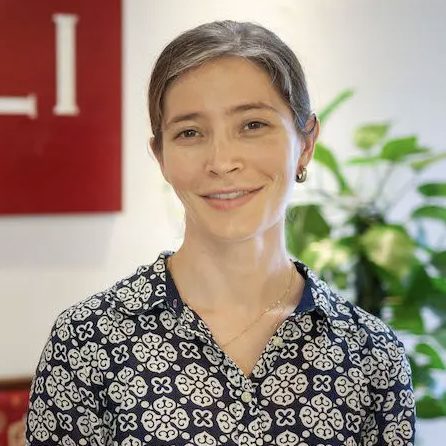
Anne Meredith holds an MA in International Politics and Chinese Studies from the Johns Hopkins School of Advanced International Studies (SAIS). As part of the graduation requirements for the program, Anne wrote and defended a 70-page Master's thesis entirely in 汉字 (hànzì; Chinese characters). Anne lives in Shanghai, China and is fluent in Chinese.



